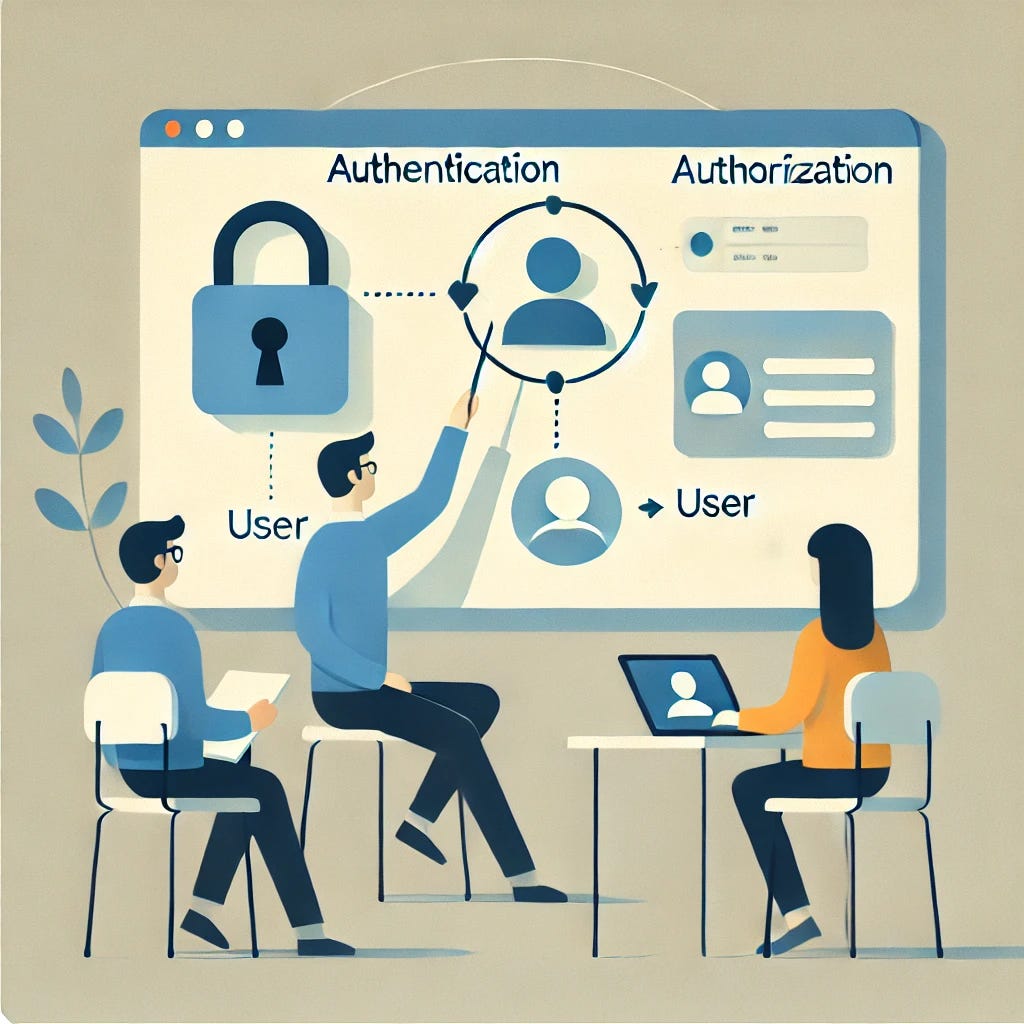OAuth, OIDC, AuthN, and AuthZ: Simplifying Modern App Security
Learn How Authentication and Authorization Work with OAuth and OpenID Connect Standards
Recently, I explored the concepts of authentication and authorization, often abbreviated as AuthN and AuthZ. I also delved into OIDC (OpenID Connect) and OAuth (Open Authorization), two critical protocols in modern app development. Here's a beginner-friendly breakdown to help you grasp these essential concepts.
1. Authentication (AuthN)
Think of authentication as proving who you are. Imagine you’re trying to enter your school. At the gate, the guard asks, “Who are you?” You show your school ID card, and they verify it’s you. That’s authentication in action.
Real-World Examples:
Logging in with a username and password.
Using biometrics like fingerprints or facial recognition.
Purpose:
To confirm that the person or system trying to access something is legitimate.
2. Authorization (AuthZ)
Now that you’re inside the school, let’s say you want to access the science lab. The lab has rules: only science students are allowed. The guard checks your timetable, confirms you’re a science student, and lets you in. This process is authorization—determining “What you’re allowed to do?”
Real-World Examples:
A regular user can view files, while only an admin can delete them.
Accessing specific API endpoints based on your user role.
Purpose:
To control access to resources based on permissions and roles.
3. OAuth (Open Authorization)
Picture this: You’re at a school fair and want to buy snacks, but you forgot your money. You call your mom and say, “Can you tell the snack stand to let me buy snacks, and you’ll pay later?”
Your mom speaks to the snack stand, and they hand you a special ticket to buy snacks. The snack stand doesn’t need your mom’s credit card—they trust the ticket. This is OAuth: a protocol that lets apps share limited access to your information without sharing your password. Simply put, OAuth – 'Let someone help you, safely!
Real-World Examples:
Logging into an app using your Google account.
Allowing a travel app to access your calendar for flight scheduling.
Purpose:
To enable delegated access to resources, making it ideal when apps need access to your data from other platforms.
4. OIDC (OpenID Connect)
Now, let’s say the school fair is in another state, and the organizers don’t know you personally. However, they trust your school ID. You show your ID, and they can verify who you are and what you’re allowed to do. This is an example of OIDC in action: “Verifying identity and authorizing permissions.”
OpenID Connect (OIDC) works similarly. It’s built on top of OAuth and serves to verify your identity, often used in single sign-on (SSO) scenarios.
Real-World Examples:
Logging into an app with your Google account, where the app not only learns who you are (AuthN) but also gains optional access to your data (AuthZ).
Purpose:
To provide federated authentication (proving your identity across platforms) while optionally granting access permissions.
Key Difference Between OAuth and OIDC
While OAuth is primarily about authorization (granting apps limited permissions to access your data), OIDC adds an authentication layer, verifying your identity. Together, they’re powerful tools for building secure, user-friendly login systems.
Quick Summary
Authentication (AuthN): Proving who you are, like showing your school ID.
Authorization (AuthZ): Checking what you’re allowed to do, like accessing the science lab.
OAuth: Letting someone act on your behalf without sharing sensitive info, like using a ticket at the snack stand.
OIDC: Verifying your identity (AuthN) and optionally granting permissions (AuthZ), like proving you’re a student in another state.




Great explanation! I love how you broke down these complex authentication and authorization concepts into relatable, easy-to-understand examples.